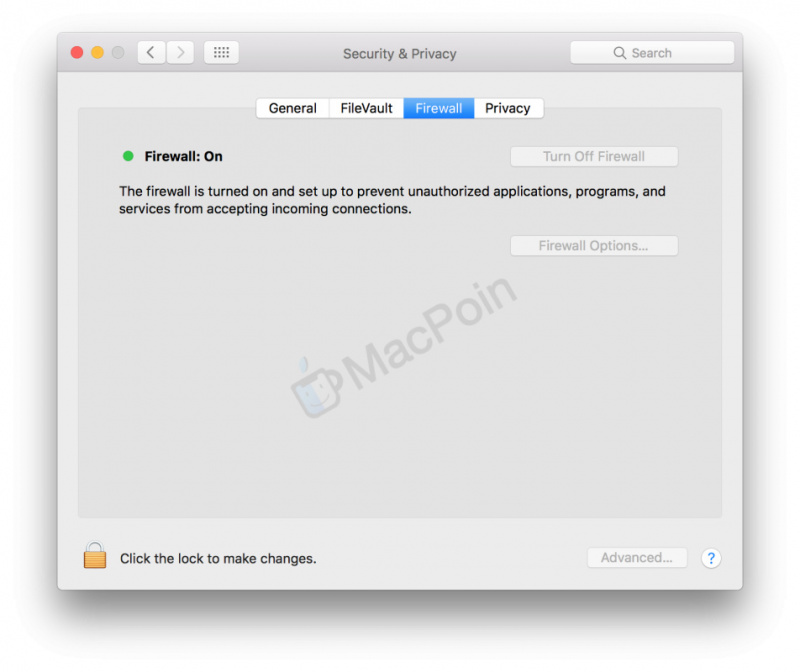

One you have enabled the firewall, you will have the option of clicking a new button in the “Security & Privacy” window: “Firewall Options.” Click the button to begin configuring your firewall. However, you can also go in and configure the firewall settings to match your unique purposes and preferences. Now the firewall is switched on, and you can click the lock again to save your new settings.

To make changes to your settings here, you’ll have to click the lock icon in the bottom left-hand corner of the window and enter your administrator password. In the “Security & Privacy” window, select the “Firewall” tab.Open the “System Preferences” menu and click on the “Security & Privacy” in the first row of the menu (the one with the house icon).Follow the steps below to switch on the built-in firewall in OS X. The good news is that turning on and configuring your Mac’s firewall is a simple process. Just to be safe, it’s a good idea to switch on your Mac’s firewall before hopping on a public network. In such environments, you can never be sure who else is on your network and whether or not they might be looking for open ports through which to invade your computer. The exception is if you are using a public network-whether in coffee shops, libraries, or airports.
FIREWALL FOR MAC MAC OS X
As a result, unless you’re running an app from an untrusted or unknown publisher or using some sort of server program where monitoring connections is actually essential, your Mac OS X firewall usually won’t be doing much. Most Mac programs-whether they were installed on your computer as out-of-the-box apps or downloaded from a trusted developer via the Apple App Store-aren’t vulnerable to incoming connections. It essentially shuts down unauthorized incoming connections before they reach your apps-all without tampering with your outgoing connections and impairing your network access. By monitoring these connections, the firewall is able to prevent a third party from exploiting the apps on your machine. What the Firewall DoesĪ firewall is a system that blocks or allows connections between your network ports and the applications on your computer. Regardless, enabling the firewall is a good measure to take just in case. Sure, it’s probably true that the average Mac user will rarely experience a situation where their system is vulnerable in this way. By enabling the firewall, you bring up the shields and protect your sensitive files and personal information from such a possibility. It only takes one system vulnerability or rogue app, exploitable through the Internet, for your machine to be remotely accessed by a hacker. In most situations, though, having the firewall enabled will offer more benefits than drawbacks. The short answer is “yes.” Apple leaves the firewall disabled by default because it can cause issues with certain applications. The steps to do so are quite simple and user-friendly, but the first question is this: do you need to enable the firewall on your Mac?

If you’ve recently purchased a new Mac computer, then you will have to go in and turn on the firewall manually if you want that protection.
FIREWALL FOR MAC FOR MAC OS X
Unlike the firewall settings in Windows, the built-in firewall for Mac OS X is not enabled by default.


 0 kommentar(er)
0 kommentar(er)
